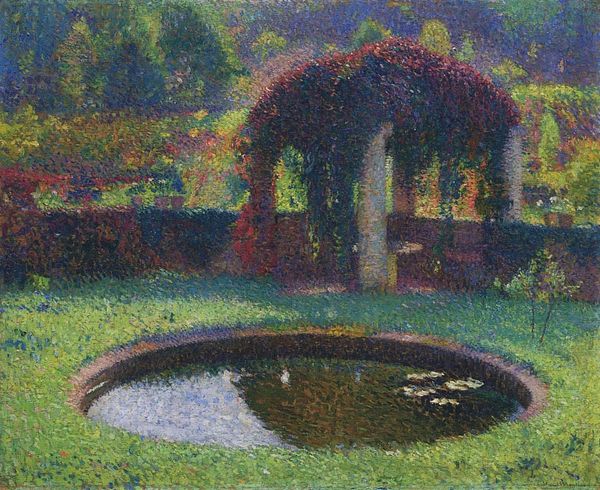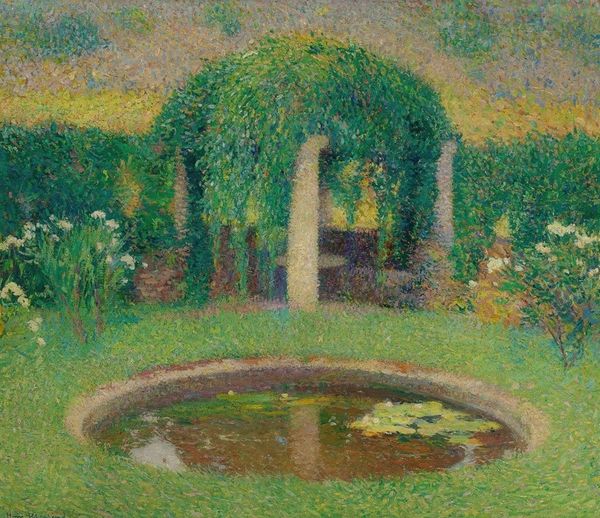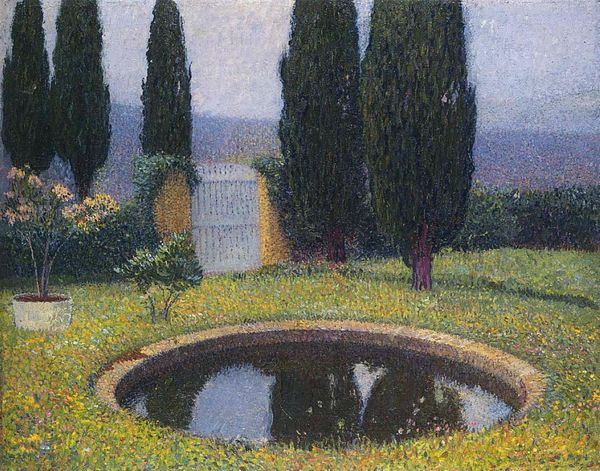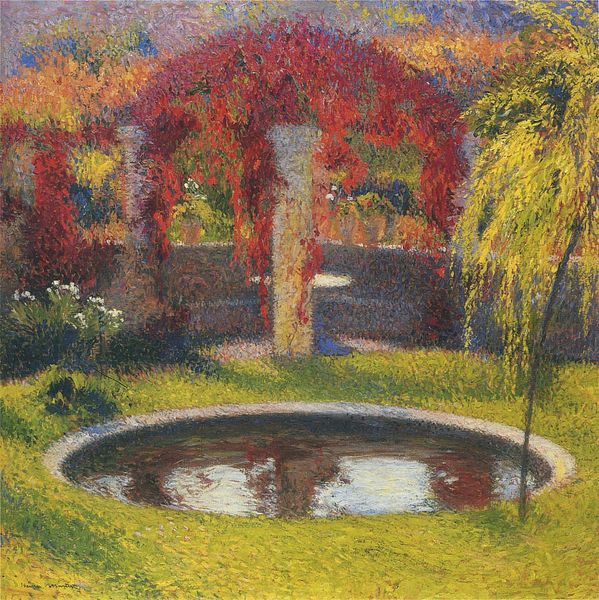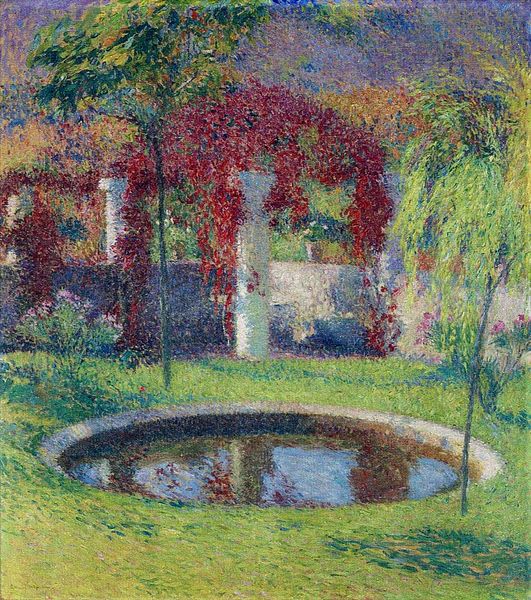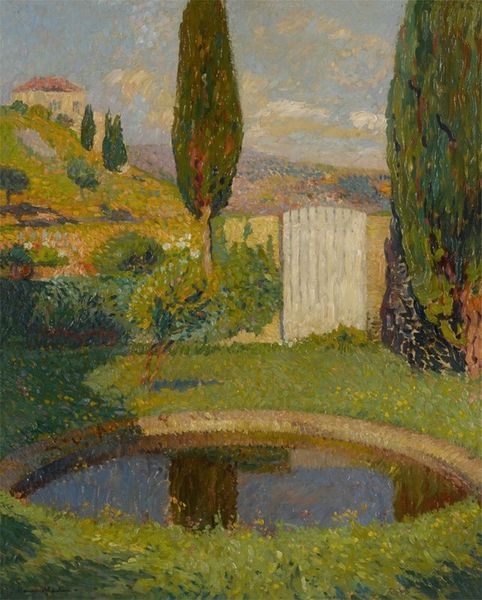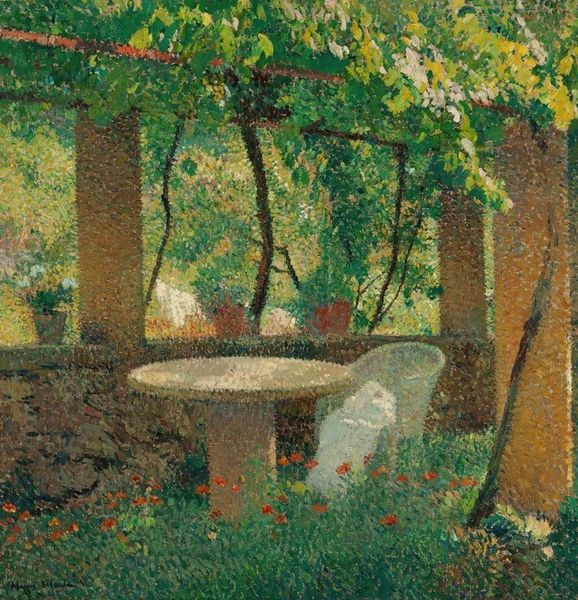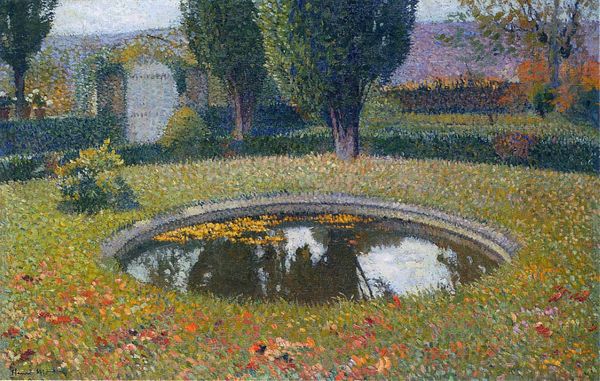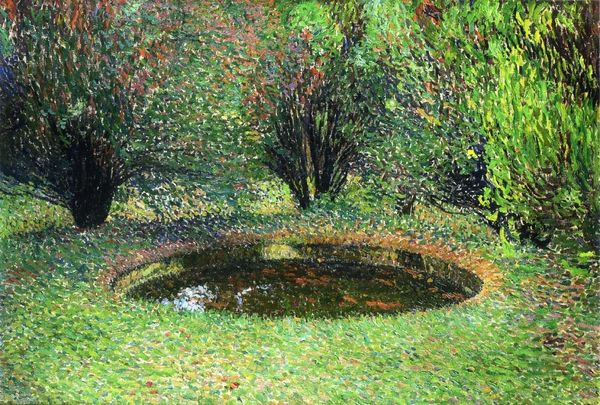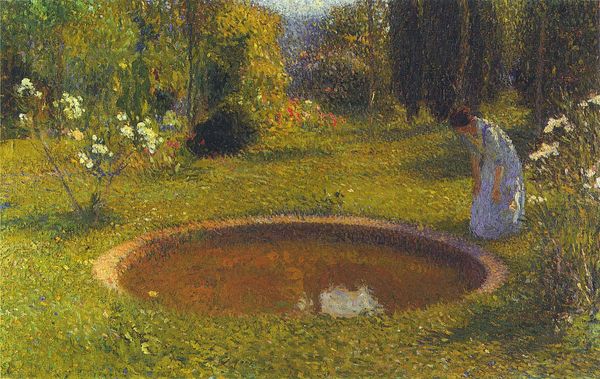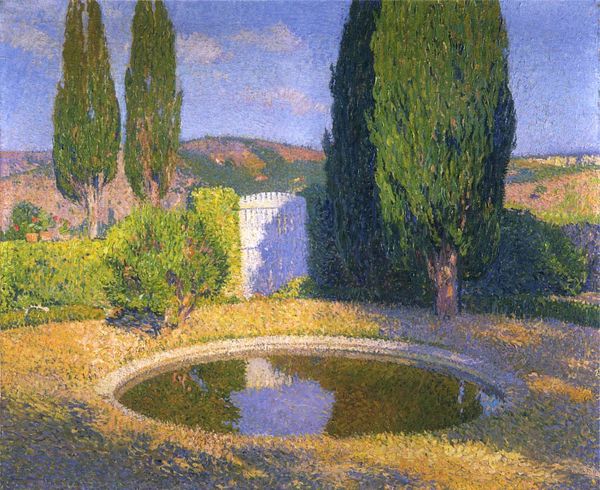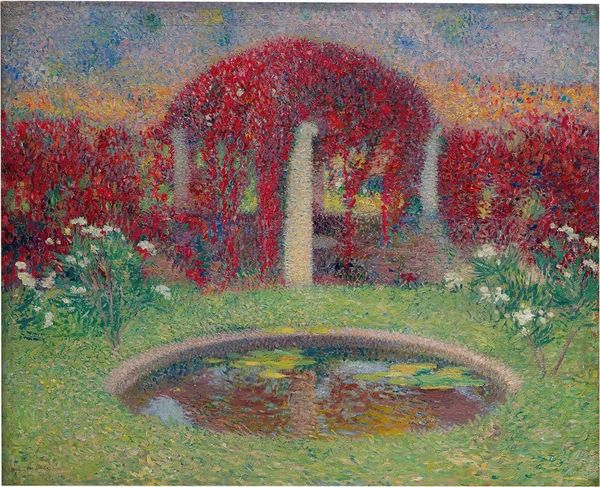
Copyright: Public Domain: Artvee
Editor: So this is Henri Martin's "Bassin Et Tonnelle Sud-Ouest Du Parc De Marquayrol," created around 1920 using oil paint, and the technique seems to be Divisionism, or Pointilism. It feels very dreamlike, with all the tiny dabs of color. What do you see when you look at this landscape? Curator: I see a powerful assertion of bourgeois leisure, but also a possible critique, intended or not. Consider the date: roughly 1920, just after the horrors of WWI. This image, depicting a tranquil garden scene, offered an escape for a society grappling with profound loss and disillusionment, don’t you think? Editor: That makes sense. It definitely seems like a comforting scene. What elements support this social reading? Curator: Note the manicured garden, the deliberate geometry offset by the natural forms. These are clear symbols of control and order – values highly prized by the ruling class after the chaotic war years. Is this escapism or subtle propaganda, though? Who did Martin intend to reach with this vision? Editor: Ah, the intended audience! So, was he reinforcing traditional values or simply trying to offer a beautiful and soothing image to the masses? Curator: Perhaps both. His divisionist technique, with its separation of colors, itself speaks to fragmentation and a yearning for harmony. It mirrors the societal fractures of the time but also suggests a path towards reunification – a visual metaphor for post-war healing, accessible mainly to the well-to-do. Editor: That's fascinating! I hadn’t considered the connection between the technique and the socio-political context. Curator: Art doesn't exist in a vacuum. The context of the painting deeply impacts its interpretation. Editor: Exactly, I now understand the deeper resonance between art and its moment. Thanks!
Comments
No comments
Be the first to comment and join the conversation on the ultimate creative platform.
